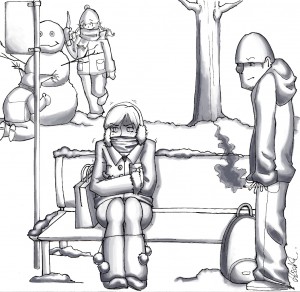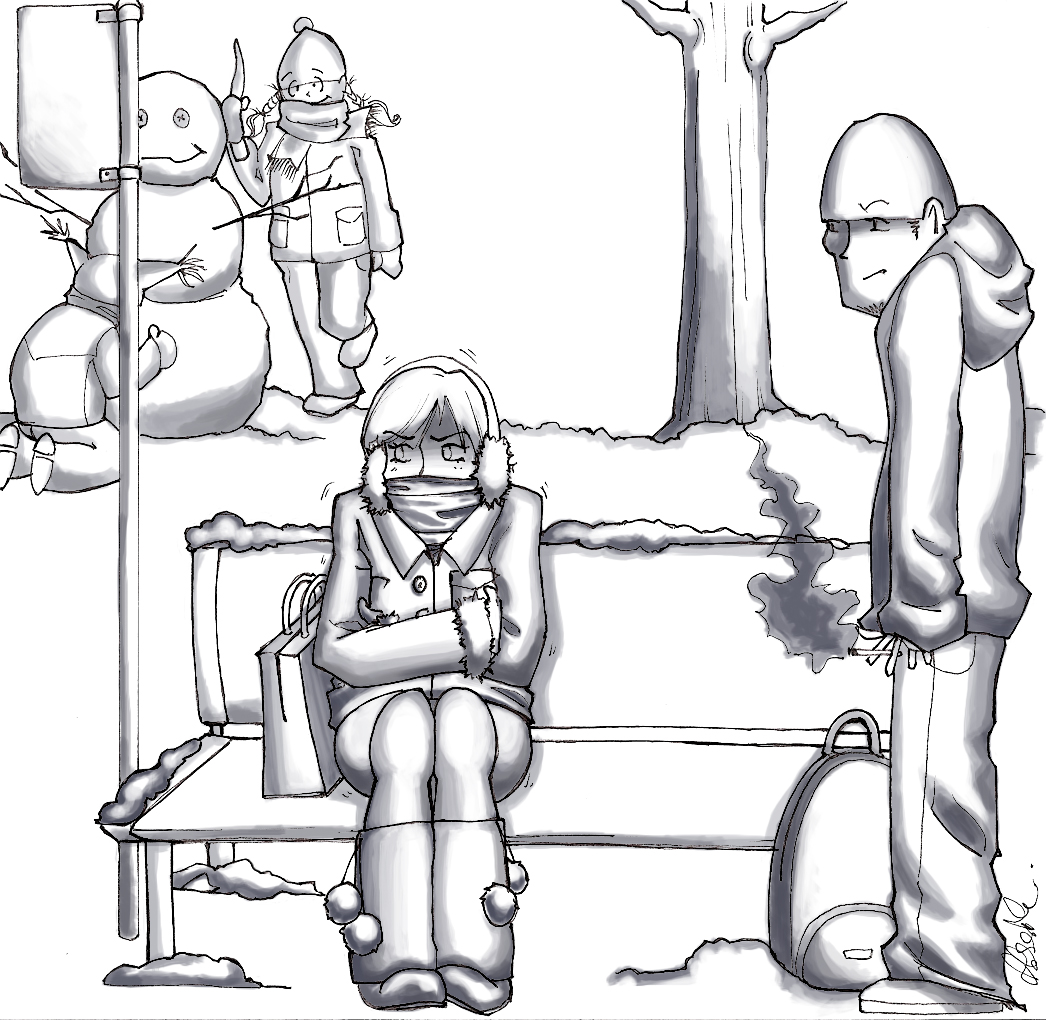
Cranking the clock one hour forward this past Sunday is a familiar ritual filled with mixed emotions.
While it does mark that spring is around the corner, what you lose in one hour of beloved sleep, you gain in an hour of precious daylight. This fact is one of the many strategies you can put in your arsenal of tricks to help make seasonal affective disorder disappear.
According to the Canadian Mental Health Association, SAD is a category of clinical depression thought to be triggered by the shortened days between late autumn until spring, resulting in less absorption of daylight. Even though SAD was officially coined as a disorder in the early 1980s, the general public living in northern climates unofficially refer to SAD as the “winter blues.”
However, using SAD and winter blues interchangeably is apparently a misnomer according to CMHA; while it is estimated that two to three per cent of Canadians are affected by SAD, up to 15 per cent of Canucks sing the winter blues, which is a milder form of SAD. Does the medical term “disorder” affect people’s interpretation of this condition or is SAD just a medical theory conspiracy?
Ahmed Abusneneh, 27, a third-year math student, doesn’t think the SAD label adds up to the sum of its parts. “I don’t believe in names, but I think it exists,” Abusneneh said. “We’re meant to live in the daytime, not at nighttime; nighttime is to sleep. So, if we have more time to sleep than to be active, then for sure as a human, you’re going to be depressed if you’re not strong.”
The opposite holds true for fourth-year honours sociology and Judaic studies student Sofia Danna when it comes to linking less sleep to depression. “I don’t necessarily get depressed, but I do know that I feel, when I’m up too late, I just get more negative and if it’s really late, I can still just be brooding,” said Danna. “So, that’s why I feel that maybe if I don’t have seasonal affective disorder, I think that I benefit from getting more sunlight and going outside.”
So what causes us to become hibernating humans during the winter? Heidi Wiedemann, a Montreal psychologist in private practice, explains that we need to see the light.
“The fact that we get that much less daylight has a very depressive effect on a lot of people, and it is like a domino effect; less light, so people go out less often, they exercise less often and all those things combined really change how people’s brains are working, they become more lethargic.” Wiedemann continues to describe how “what you seek, you will find” attitude plays a role in those affected by SAD.
“If you’re joyful and optimistic and feeling up, your brain is primed to look for things in your environment that are cheery, that are positive, that are uplifting,” Wiedemann said. “And the opposite is also true that, if you find yourself in a bit of a slump or the weather changes and you have less light and you’re becoming more lethargic, your brain is then primed to pick up all those things that will also fit that, so it will look for less positive things as reinforcement.”
Picking up on SAD symptoms may not always be as obvious; typically, the symptoms range from anxiety, appetite changes, difficulty concentrating, irritability, tendency to oversleep, reduced energy and increased fatigue. Research has also shown that SAD usually starts the age of 20 and is more prevalent in women than men. While these symptoms can overlap with those of other forms of depression, it is possible to distinguish them.
“The main differentiating factor between depression and SAD would be that with depression, usually there is something that triggers it, like an event or a loss of some sort […] a break-up, losing something of value and there are also certain thinking patterns that just make the depression deeper,” said Anna Cegielka, a West Island psychotherapist who specialises in cognitive behaviour. “With seasonal affective disorder, it just kind of happens out of the blue, all of a sudden for seemingly no good reason, people just start feeling down and lacking energy.”
Feeling the heat of spring fever is tempting when we look at the calendar that says winter will be over in a few weeks; however, the veteran Montrealer knows not to count one’s spring eggs before they hatch, as that surprise last gasp of winter seems to take our breath away come late March or early April. Whether you’ve hit a low note in singing the winter blues, or you’ve reached your breaking point, there are practical, affordable and effective solutions to help you see the light at the end of the SAD tunnel.
“It’s being mindful and aware of yourself, of your moods, your feelings, energy levels and observing and being aware from day to day how things fluctuate,” said Cegielka, suggesting effective mindfulness activities such as meditation, Tai Chi and yoga. “For some individuals, getting full-spectrum light bulbs (special light bulbs that do not filter out UV) provide somewhat of a simulation of daylight.”
Cegielka also mentioned that special lamps, similarly to light therapy, deliver a bigger dose of lighting that may be more helpful for those with increased SAD symptoms.
As for Wiedemann, she provided a three-step approach in addition to increased light to march through March a happy camper.
“My first thing would be take [exercise] outside and get as much sunlight and as much daylight on you as you can; even in my private practice I really shy away from medications,” Wiedemann explained. “There’s too much lately about how all the medications cause changes in the brain that keep you then perpetually stuck in a loop of needing when in fact, [if] you listen to those top three things, take care of yourself nutritionally, that you exercise, and that you get outside into the daylight, […] that’s much more effective than medication.”
Besides filling up on healthy foods with vitamins C, D and omega 3, or dusting off those trainers in the back of your closet (while keeping those winter boots on standby), the most simple and effective strategy you have within yourself is the power to make a positive change.




